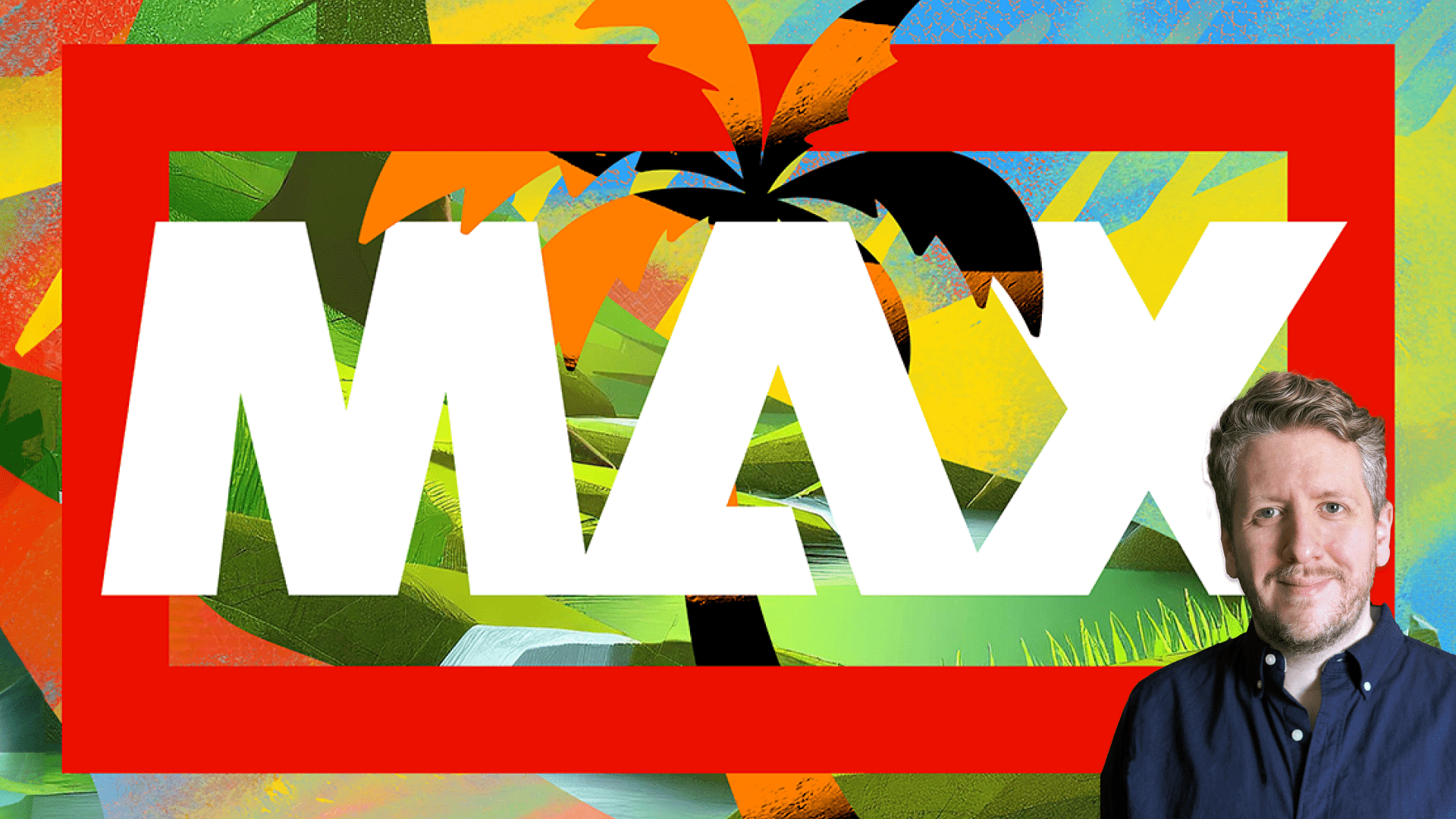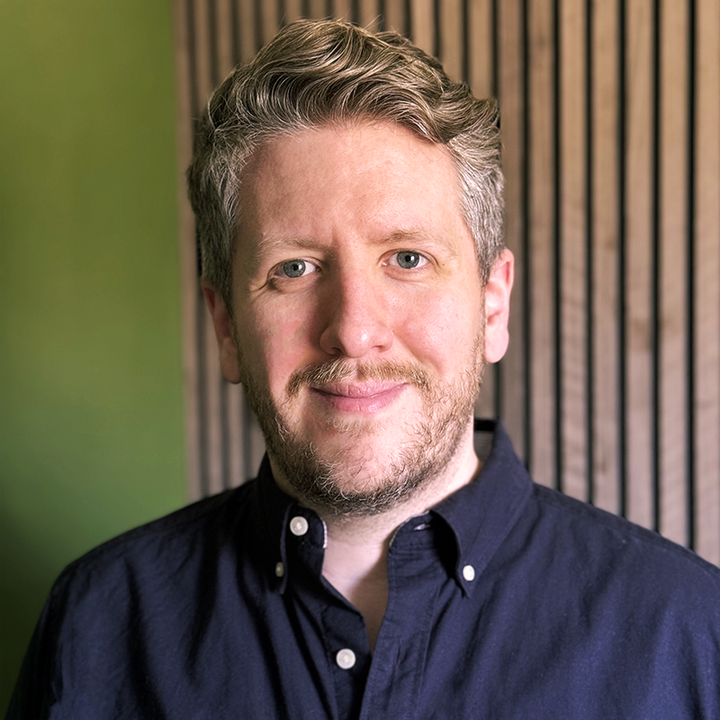
David Winter on the key takeaways from a very busy, very AI-focused, yet ultimately very optimistic Adobe MAX 2024 in Miami.
I've been using Adobe products and following Adobe MAX remotely for years. Still, a combination of living in England and a prolonged ‘starving artist’ phase meant I’d never had the pleasure of attending.
So, when the question arose of who would cover the show for RedShark, I did the noble thing and put myself forward. A trip to Miami to cover the intersection of creativity and tech? Don’t worry, team. I’ll dive on that grenade for you.
This year saw MAX move to ‘the city where the heat is on’—AKA Miami, for those who don’t speak late 90’s mainstream rap—and Adobe certainly embraced the change of scenery. The event space was alive with vivid colors, maximalist designs, and more than a few flamingos dotted about the place.
As well as a new location, another pleasant surprise was how video-centric this year's MAX felt compared to previous iterations. While Adobe's flagship event has always covered the entire creative spectrum, the emphasis on video production and post-production was notably stronger this time. That and the omnipresent AI conversation set a distinct tone for the proceedings.
And on that note, let’s dive into my first big takeaway...
1. AI is enhancing, not replacing, creative work
AI is the elephant in the room at any creative technology conference these days, and Adobe MAX was no exception. What was different, however, was Adobe's approach to implementing it. Firstly, there’s the aspect of consent. If you don’t want your work to be used to train Adobe AI, then you can simply choose not to have that happen.
Secondly, there was the matter of purpose. As it stands, I wouldn’t say I saw a single AI tool that will remove anyone's job or strip human creativity from the equation. There seems to be a genuine focus on using AI to enhance existing workflows and essentially remove the ‘dull’ parts of creative projects so you can focus entirely on your creativity.
Take Generative Extend in Premiere Pro, for example. It's not trying to edit your video for you - it's just helping with those moments when you need a couple of extra seconds on a clip and don't fancy explaining to the client why you need to reshoot.
 Kylee Peña presenting on stage at Adobe MAX. Pic: Adobe
Kylee Peña presenting on stage at Adobe MAX. Pic: Adobe
The crowd response to these practical applications was notably positive, particularly from younger creatives who seemed excited about the possibilities, despite potentially having the most to lose from AI advancement.
Will this remain the case forever? I don’t know; I’m not a mind reader! But I do know that the message from every Adobe team member I spoke to was the same—this is a team of current and former creatives making tools they would want to use in their creative work. They understand the discussion around AI and do not intend to shy away from the difficult conversations around that.
You can read more about Adobe’s AI stance in my interview with Kylee Peña - Product Marketing Manager, Pro Video for Adobe.
2. The future of video production is more accessible and flexible
One thing that became clear during MAX was Adobe's commitment to democratizing high-end video production techniques. But rather than just simplifying things, they seem to have cracked the code of making them both more accessible and more powerful simultaneously.
Take the new Object Selection tool coming to Premiere Pro. What used to involve painstaking frame-by-frame masking can now be accomplished with a few clicks. The demo involved isolating multiple moving objects in a busy scene, and you could feel the shared pain and relief as the entire room collectively remembered every hour they'd spent rotoscoping similar shots in the past.
For professionals, this is more than just making our jobs more manageable (though I won't complain about that). It's about shifting our focus from technical execution to creative decision-making. When you're not spending three hours tracking masks, you can spend that time crafting the story you want to tell.
Plus, it means we can finally say yes to those "can you just quickly remove that person from the background" requests without dying inside.
3. Frame.io V4: A game-changer for video collaboration
The full release of Frame.io V4 was one of the more significant announcements at MAX. My conversation with JJ Powell, Sr. Product Marketing Manager for Frame.io, revealed how much thought has gone into this update.
The platform has been rebuilt from the ground up, focusing on bringing everyone involved in a project—from creatives to stakeholders—into one central hub. The expansion of Camera-to-Cloud integrations to include Canon, Nikon, and Leica is particularly noteworthy, potentially streamlining the entire production process from capture to delivery.
 The new and improved Frame.io V4 UI. Pic: Adobe
The new and improved Frame.io V4 UI. Pic: Adobe
As with all software, there are users, and then there are users. I have to say, seeing the new and improved platform being wielded by someone like JJ, you understand the scope of what productions can achieve with this.
But the big question I had, coming into the show, was whether V4 represented a push towards MAM or DAM territory. “It’s a good question,” said JJ before providing a great answer that made me feel like it was not a good question at all.
Their goal is to become creative management instead of media asset management or digital asset management. It is not simply a tool for managing where your assets live but a way to drive the entire creative process from start to finish across departments and collaboratively. So far, V4 is a strong start.
4. Adobe's commitment to commercially safe AI is a big deal
In the current landscape of AI development, Adobe's approach to training its models stands out. Their commitment to using only licensed and public domain content—and compensating creators for training data—sets them apart from many others in the industry.
During the keynote, Adobe CEO, Shantanu Narayen, clearly stated their position: no training without permission, no using customer content, no scraping the internet. It's an approach that might seem obvious, but it's surprisingly rare in the current AI gold rush. As regulations around AI-generated content evolve, this commitment to ethical development could prove remarkably prescient.
Anyone watching at home would have seen this message in the keynotes, but you wouldn’t have seen how consistent it was across the learning sessions, demos, and conversations. Adobe is putting all chips on this being the right path forward. It’s a bet I hope they win big on as, if nothing else, it will force other companies to explore more creator-friendly methods in the long-run.
5. The power of in-person learning and collaboration
While remote learning has its place, the workshops and hands-on sessions at MAX demonstrated the continuing value of in-person events. There's something about asking questions in real-time and seeing demonstrations up close that online tutorials just can't quite replicate.
The workshops were particularly well executed, offering genuine learning opportunities rather than just product demonstrations. Even for experienced users, there were plenty of new techniques and workflows to pick up.
 Attendees receiving hands-on demonstrations of different Adobe products.
Attendees receiving hands-on demonstrations of different Adobe products.
And, of course, there is the networking. In an increasingly digital world, even someone as driven by their home comforts as I am can appreciate being surrounded by peers and fellow creatives. The creative potential under one roof is extraordinary.
Plus, you can go to a private party where T-Pain is performing. I’m not sure how much that helps with the learning, but it sure helped everyone collaborate on a good time.
6. The unexpected star of the show: Adobe MAX Sneaks

If there was one genuine surprise at MAX, it was the Sneaks presentation. This showcase of experimental features and tools offers a glimpse into potential developments. Much like a box of chocolates, you never know what you’re going to get. But they generally range from mindblowing to kind of exciting but not much practical application. But this year, it was just hit after hit.
Each presented feature showed MASSIVE practical utility. These weren't just clever tech demos but potentially invaluable tools for day-to-day creative work.
The developers presenting their projects were received like rockstars taking to the stage to shred a killer solo, and rightfully so. Their innovations were, well, innovative!
Every Sneaks has at least a few features you hope get made. This year, I want to see all nine become a reality ASAP!
7. The 3D revolution is coming
I’ll be honest—I know very, very little when it comes to 3D and/or animation. So when I saw Adobe's Substance 3D suite was scheduled in for a chat in my diary, I was a little nervous.
Luckily for me, during my chat with François Cottin, Senior Director of Marketing for 3D at Adobe, it became clear that Adobe is trying to do for 3D what they helped do for video over a decade ago—make it accessible to everyone, not just the experts with beefy workstations.
Remember when video editing required a machine that cost as much as a small car? Now, we're all carrying a video studio in our pockets. According to Cottin, 3D is heading down the same path. The goal isn't to turn everyone into a 3D expert but to let non-experts access and use 3D assets in everyday work.
Introducing tools like Substance 3D Viewer and Project Neo shows they're serious about this. Being able to import and manipulate 3D files directly in Photoshop might not sound revolutionary, but for anyone who's ever had to go through three different departments just to get a product shot at a slightly different angle, it's a game-changer.
The potential integration with Premiere Pro is particularly intriguing for us video folks. While Cottin wouldn't make any promises (wise man), the direction seems clear—3D integration is coming to video workflows, and it won't require a PhD in Computer Graphics to use it.
Conclusion
I'll admit I went to Adobe MAX 2024 with a healthy dose of skepticism about where our industry is heading, particularly regarding AI. But what I found was a refreshingly measured approach to creative technology. Instead of revolution, Adobe seems focused on evolution—building tools that enhance rather than replace human creativity.
The event struck a perfect balance between announcing new features and teaching people how to use them effectively. While the Miami heat might have felt like rendering an 8K project on a 2015 MacBook, the change of location brought fresh energy to proceedings.
%201-min.webp?width=960&height=540&name=maxresdefault%20(3)%201-min.webp) Some palm trees I took a picture of because, y'know, it's Miami!
Some palm trees I took a picture of because, y'know, it's Miami!
Perhaps most importantly, I left feeling optimistic about the future of video production. Not because of any single revolutionary feature—although there were a few on display—but because of the clear focus on making our tools more capable while keeping creatives firmly in the driver's seat.
The AI future is still daunting for video creatives everywhere, but so far, Adobe is saying the right things and moving in the right direction, which should be acknowledged.
My therapist calls it optimistic skepticism—acknowledging the risks while hoping for the best. I simply call it being a video editor. And, for now, Adobe has this video editor leaning more toward optimism than skepticism.
Tags: AI Adobe Premiere Pro Adobe Adobe MAX


Comments